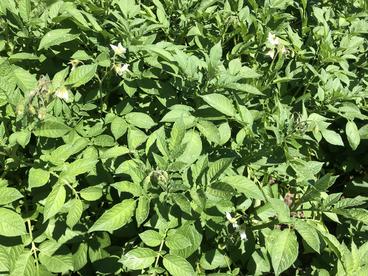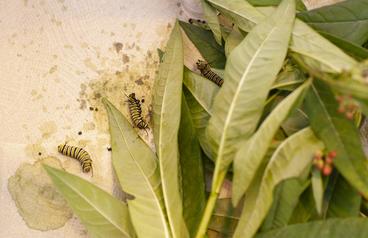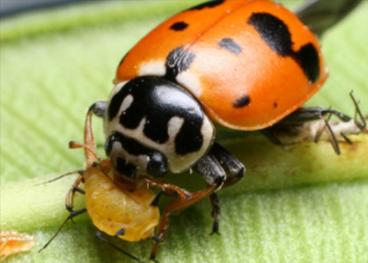Minimize the use of broad-spectrum pesticides. These are toxic to bees and other pollinators, and include neonicotinoids, pyrethroids, organophosphates, and others.
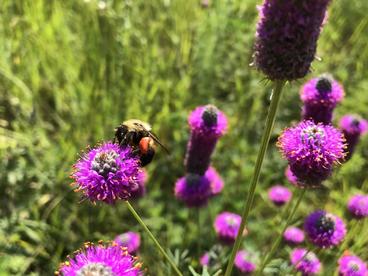
Consider alternatives to pesticides first. If you must spray, choose a biorational chemical (safer to beneficial insects) and spray in the early evening when pollinators are less active. Planting insect- and disease-resistant varieties, proper irrigation, nutrition management, and allowing beneficial insects and spiders to visit plants help reduce the need for pesticides.
The disappearance of pollinators and effects of neonicotinoid insecticides on pollinators highlights the question as to whether our risk assessment approach is adequate.
Understanding Pesticides and Pollinators
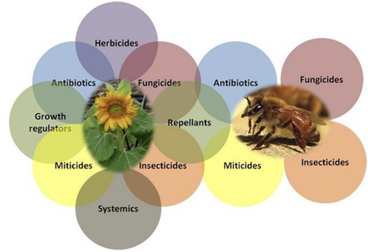
Use Integrated Pest Management (IPM) to control insect pests and weeds. IPM is an approach that employs monitoring of plants, pests and weather to project ahead and plan. IPM addresses the source of pest problems, whereas pesticides simply respond to the pest. Ultimately, IPM helps in reducing pesticides, which is a key component in creating pollinator-friendly habitat. Pesticides are harmful to pollinators and beneficial insects. Instead of routinely spraying for insects, spot treat only when necessary with soft pesticides such as soaps and oils.
- Pesticides should not be used in or around nesting and forage sites.
- Insecticides are toxic and harm pollinators and beneficial insects.
- Herbicides can kill the plants that pollinators use for food and shelter.
- Fungicides can be toxic to bees.
- Some additives and inert ingredients used in pesticides can be toxic.
- Combining pesticides, additives and inert ingredients has synergistic effects that can increase toxicity.
Pesticide toxicity explained
photo: L. Schneider
Pesticides include herbicides, fungicides and insecticides. Pesticide active and inert ingredients can be found on the label of the pesticide container. The active ingredient is the chemical registered by the EPA as toxic to pest and beneficial insects. Inert ingredients are penetrating agents, odor maskers, stabilizers, preservatives, diluents, surfactants, emulsifiers, propellants, solvents, spreaders, stickers, antifoaming agents, dyes, and drift retardants that modify the physicochemical properties of the spray mixture. Insecticides are designed to destroy both target and non-target insects. Recent papers demonstrate that some inert ingredients are also highly toxic to bees, and also fungicides demonstrated toxicity to bees. Numerous papers have shown that lower, sublethal amounts of insecticides affect behavior and alter the ability of insects to find food and survive. For these and numerous other reasons, insecticides are not safe to use around pollinators and other beneficial insects.
What are systemic insecticides?
A systemic insecticide is absorbed into the plant's vascular system, leaving the entire plant toxic to both target and non-target insect species. Neonicotinoids are a class of systemic insecticide particularly harmful to bees and other pollinators. They have lethal and sublethal effects on insect species by affecting the central nervous system which results in paralysis and death. However, in spite of high toxicity to pollinators, neonicotinoids are the most widely-used insecticides in the world due to their low mammalian toxicity and the ability of the insecticide to move systemically from soil into the entire plant.
Neonicotinoid application methods include seed treatments, foliar sprays, soil and trunk drenches, and trunk-injections. Flowering plants that open after systemic insecticides are sprayed can contain the insecticide residue for many months or more in the leaves, pollen and nectar. Avoid using systemic insecticides on flowering plants that pollinators visit. If a pesticide must be used, apply spot treatments of contact insecticides instead.
There are six neonicotinoid active ingredients: imidacloprid, dinotefuran, thiamethoxam, and clothianidin, of which acetamiprid and thiacloprid are the least toxic to bees. Another systemic insecticide, fipronil, is used around buildings and is also toxic to bees. You can find these active ingredients listed on the insecticide label in small print.
The neonicotinoid class of insecticides is highly toxic to pollinators and kills bees at around 180 ppb in flower nectar or pollen. Sublethal doses of neonicotinoid insecticide starting around 10 ppb cause bees to lose navigation and foraging abilities. The longevity and amount of the neonicotinoid in the pollen and nectar will depend on application method, concentration applied, and binding capacity of the soil. Adult bees consume neonics which are stored in pollen and honey where they become concentrated, and are then fed to developing young.
Why insects versus pesticides
photo: Pavlos Skenteridis, Bio-insecta
- Conservation of natural enemies of insects (predators and parasitoids) to help suppress pest insects.
- Conservation of pollinators (such as bees and beetles) to help increase crop yields.
- Some pest insects can develop pesticide resistance with increased use of pesticides.
- Pesticides kill both good and bad (non-target and target) insects including predator bugs, as well as important soil dwelling insect predators.
- Beneficial insects are cost-effective and safe for humans, birds, wildlife and the environment.
